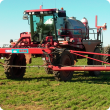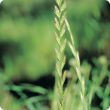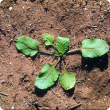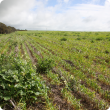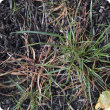Pests, weeds & diseases
Pests, weeds and diseases pose a serious risk for primary producers as they can impact on market access and agricultural production.
To reduce the impact of pests, weeds and diseases, the Department of Primary Industries and Regional Development:
- works with landholders, grower groups, community groups and biosecurity groups.
- provides diagnostic services and information on prevention, management and treatment.
- provides biosecurity and quarantine measures to prevent introduction, and to eradicate or manage current pests.
For advice on pests, weeds and diseases search our website, the Western Australian Organism List or contact our Pest and Disease Information Service (PaDIS).
For diagnostic services, please contact our Diagnostic Laboratory Services.
Articles
Filter by search
Filter by topic
- Grains (7) Apply Grains filter
- Weeds (7) Apply Weeds filter
- (-) Remove Grains research & development filter Grains research & development
- Crops (7) Apply Crops filter
- (-) Remove Herbicides filter Herbicides
- (-) Remove Control methods filter Control methods
- (-) Remove Chemicals filter Chemicals
- Crop weeds (6) Apply Crop weeds filter
- Mechanical, physical and cultural (2) Apply Mechanical, physical and cultural filter
- Wheat (1) Apply Wheat filter



